Early on November 11, 1918, high-ranking representatives from the Allies and the German Empire boarded a railway carriage in the north of France to sign the Armistice that effectively ended World War I. This agreement came into effect later that same morning at 11am, and when news broke that hostilities had finally come to an end, many rushed onto the streets to celebrate. However, amidst the rejoicing, the ultimate sacrifice made by the millions who had lost their lives on the bloody battlefields of Europe remained fresh in people's memories. From that year onwards, November 11 has become a day of remembrance for all those who have given their lives in military service to their country, not just in the two World Wars but also subsequent conflicts.
On an occasion that evoked such mixed emotions, it is little wonder that the events of that first Armistice Day in November 1918 have sparked many fascinating books. Here are eight of our own favorite titles exploring different aspects of that first Armistice, from in-depth studies of those most closely associated with the day itself to thought-provoking analysis of the events that immediately preceded and followed the official end of hostilities on the Western front.
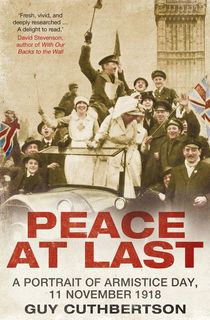
Peace at Last
This compelling narrative history focuses exclusively on Armistice Day itself, with an hour-by-hour account of the unfolding events from midnight onwards on November 11, 1918. Focusing mostly on Britain, Guy Cuthbertson has researched an impressively wide range of sources, including newspapers, letters and diaries, to produce this extraordinarily detailed portrait of that momentous day. His “absorbing and well-researched” account (Wall Street Journal) captures the public mood perfectly and illustrates the conflicting emotions felt by people from all walks of life, as news broke of the end of hostilities in Western Europe.
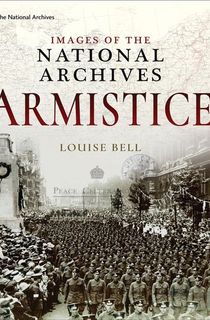
Armistice
Making extensive use of rarely seen images from the UK’s National Archives, Louise Bell’s Armistice chronicles the key moments relating to the end of World War I. Her account begins with the German Spring Offensive of March 1918 and ends in November 1919, a year after Armistice Day, with the unveiling of the Cenotaph in London. Along the way, the author highlights the devastating long-term effects of the conflict on the physical and mental health of many World War I veterans.

Voices From The Past, Armistice 1918
The fascinating story of the final countdown to the Armistice of November 1918 is recalled here through the eyewitness accounts of the soldiers, politicians and newspaper reporters who experienced the events firsthand. Paul Kendall’s gripping narrative reveals in comprehensive detail the stories of those who sought to bring the war to an end, the combatants who waited nervously on the battlefield for the ceasefire to be declared and the ecstatic celebrations that followed the announcement of the Armistice.
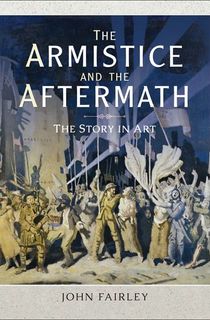
The Armistice and the Aftermath
The Armistice and the Aftermath is packed full of extraordinary pictures from the artists who were inspired to record this unique moment in history. This beautifully illustrated book features a diverse selection of artwork, including work from official war artists and those tasked with recording the historic events at the 1919 Versailles Peace Conference, as well as those who chose to record the scenes of celebrations in major cities like Paris and New York. Their evocative images are complemented perfectly by John Fairley’s insightful narrative, which provides a perceptive commentary on the diverse ways in which artists chose to depict the dramatic events on canvas.
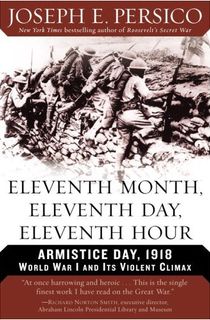
Eleventh Month, Eleventh Day, Eleventh Hour
Joseph Persico’s thought-provoking history of November 11, 1918, provides “an eye-opening study of the final hours of a war that threatened never to end” (Kirkus Reviews). Setting the events of that last morning within the wider context of the war itself, the author focuses on the experiences of the soldiers in the trenches from both sides as the fighting continued pointlessly until the predetermined end of hostilities at 11am. Persico’s compelling account reveals in intimate detail how as a result nearly three thousand men needlessly lost their lives on that final morning.
As World War I reached its violent climax, it is interesting to note some of those present on that fateful final morning. Persico highlights the likes of Harry S. Truman, George Patton and even Adolf Hitler, who would subsequently all become major players on the world stage.

'Rosy' Wemyss, Admiral of the Fleet
Subtitled “The Man who Created Armistice Day”, this impeccably researched biography chronicles the fascinating life and career of Admiral Rosslyn “Rosy” Wemyss. The Scottish Admiral is relatively little-known today, but as First Sea Lord of the Royal Navy, he played a pivotal role in the negotiations leading up to the armistice on November 11, 1918. This marked the pinnacle of an outstanding naval career which had begun as a 13-year-old over four decades earlier. In researching this biography, John Johnson-Allen was given unprecedented access to an archive containing a sizeable quantity of Wemyss’ personal papers, including the Admiral’s own priceless account of the events that transpired on Armistice Day.
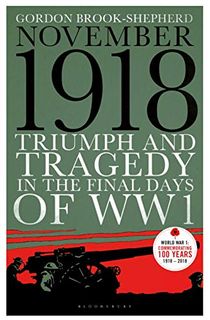
November 1918
First published in 1981, Gordon Brook-Shepherd’s illuminating World War I history encompasses the last hundred days of the conflict across all fronts, from the opening phase of the Allied Offensive at Amiens in August 1918 to the signing of the Armistice and the subsequent abdication of the German royal family. The former British intelligence officer uses his own considerable expertise to provide a fascinating analysis of the key military and diplomatic moments in the run-up to the end of World War I. Brook-Shepherd also makes extensive use of eyewitness accounts from an extraordinarily wide selection of sources, ranging from Zita, the last Empress of Austria-Hungary, to rank-and-file soldiers from both the Allied and German sides.
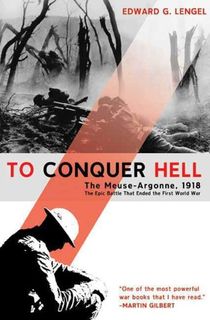
To Conquer Hell: The Meuse-Argonne, 1918
In late September 1918, a colossal US task force of some 1.2 million troops began an assault on the German-held Meuse-Argonne region of France. Intended to open up a direct route to Berlin, the fighting went on for six long weeks, claiming tens of thousands of lives and only ending with the signing of the Armistice on November 11, 1918. American soldier Henry Nicholas John Gunther is reported to have been the last combatant to be killed during World War I, dying in a roadblock near Meuse at 10:59am, just one minute before the Armistice came into effect.
Generally regarded as the bloodiest battle in US history, yet remarkably little-known, Edward G. Lengel’s compelling To Conquer Hell provides a welcome in-depth analysis of all the key moments of the Meuse-Argonne offensive. His deeply researched account also includes fascinating profiles of many of the leading figures on the American side, such as John Pershing, George Patton and Alvin York.




